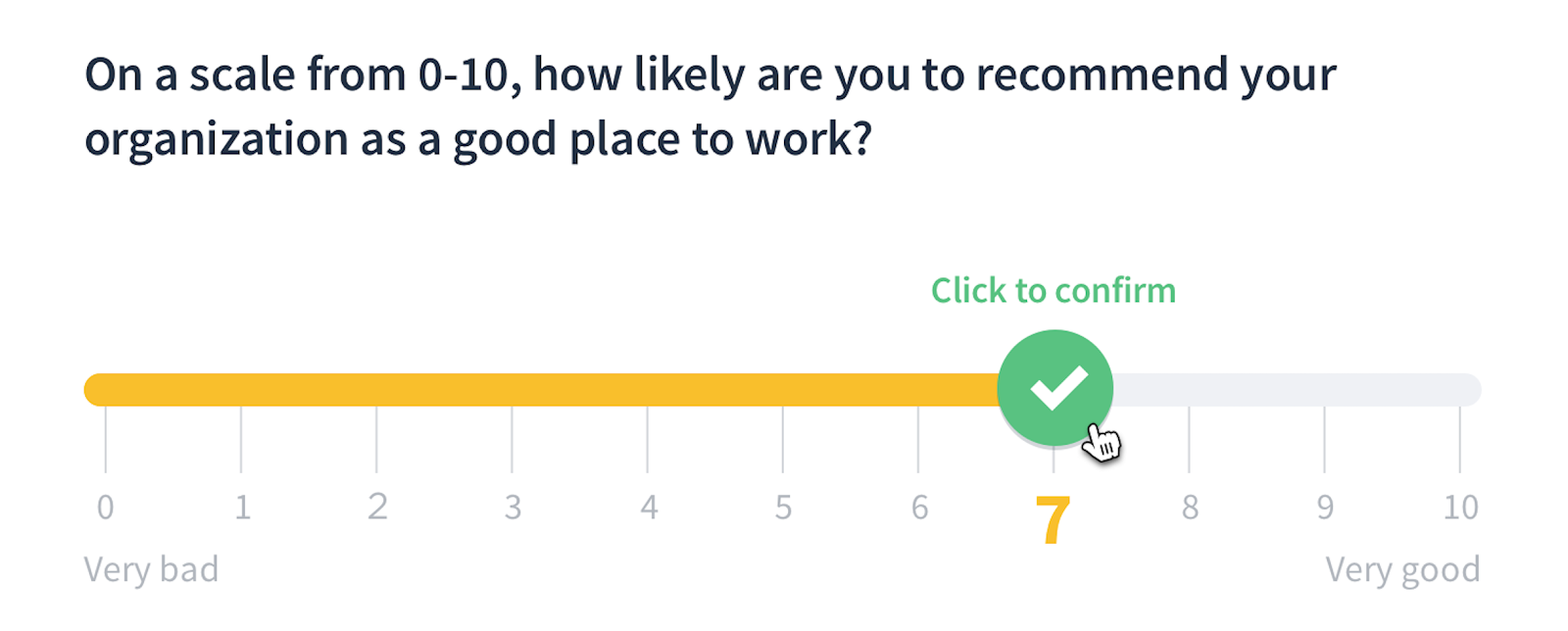3 Most Important Employee Engagement Metrics You Should Be Measuring
You know that employee engagement is important to retaining your team, but do you know how to measure it? Can something as intangible as engagement be measured?
Of measures of employee engagement, Gartner says that “Any measurement must take into consideration a multitude of factors, all of which contribute to an overall understanding of individual engagement levels, which are then reflected in team and organizational views” (full content available to Gartner clients).
If you ask Google how exactly to measure employee engagement, you’ll be confronted with a plethora of different metrics you should be tracking. Though all that data is vital to gauging employee engagement, we’ve broken down the three most important employee engagement metrics you should be tracking within your organization.
3 critical employee engagement metrics
1. Employee Net Promoter Score (eNPS)
The employee Net Promoter Score, or eNPS, is based on the Net Promoter Score, which is a measure of how likely your customers are to recommend your company to others. The only difference is, instead of measuring customer loyalty, you’re measuring your employees’ loyalty and engagement.
Here’s how it works—the question you pose to your employees is simple:
“How likely is it that you would recommend working at our company to a friend or colleague?”
Your employees give you a score between 0 and 10. The scores they give will help classify those employees into three groups:
Responders with a score between 0 and 6 are detractors. Detractors are your unhappy employees who are unlikely to recommend your company and are actively disengaged.
Responders with a score between 7 and 8 are passive. Passives aren’t yet actively disengaged, but they’re not enthusiastic about the company.
Responders with a score between 9 and 10 are promoters. Promoters are actively engaged, loyal, and ready to recommend the company to others as a good place to work.
eNPS = % of promoters – % of detractors
_*passives are not counted in the eNPS score
_
For example: Let’s say you have 30% promoters, 45% passives, and 25% detractors, your eNPS score would be +5.
Positive eNPS scores are generally considered to be good scores, while negative scores indicate that there are engagement issues within your company. However, this will differ from organization to organization.
Why is eNPS an important employee engagement metric?
eNPS scores measure employee loyalty, which is one of the most indicative characteristics of an engaged employee. It’s also a simple method, the results of which can be monitored over a period of time with little expense.
How to measure eNPS scores effectively
The easiest and most effective way to both measure and analyze eNPS scores is by using a software tool to help you see how your score has changed over time and view details of why your score might be what it is. Because this type of feedback is of low-level effort (employees are asked to answer the same singular question every few months), you’re likely to see a high response rate.


Example of Officevibe’s eNPS feature
2. Employee Turnover Rate
This employee engagement metric measures the loss of talent within your organization over a period of time. Optimum turnover rates differ vastly between industries, but the overall turnover employee rate stands at 18%.
Here’s how to calculate your annual employee turnover rate:

For example: To get started with this, you’ll first need to work out your average number of employees during a year.
Let’s say your company had 150 employees at the beginning of 2018; during the year, 30 employees left the company and you hired 4 people. This left you with 124 employees.
The calculation to find out your average number of employees looks like this:
_
150 + 124 = 274_
274 ÷ 2 = 137
You had an average of 137 people working for you in 2018.
You can then complete the equation:
30 ÷ 137 = 0.22
0.22 x 100 = 22
So, in this scenario, your 2018 employee turnover rate would be 22%. You can also work out your monthly employee turnover rate using the same equation.
Why employee turnover rate is an important employee engagement metric
A major HR challenge is managing and decreasing employee turnover. High turnover rates mean high costs of replacing and training new employees. But in terms of employee engagement, measuring your turnover rates will give you an idea of the general health of your company. Higher rates of turnover can also lead to a dip in morale among remaining employees—the result of a heavier workload and loss of colleagues.
3. Employee Absenteeism Rate
Employee absenteeism is also a crucial metric to measure employee engagement. Your employee absenteeism rate measures the percentage of employees who were absent over a given time. Higher percentages can indicate high levels of employee disengagement.
Here’s how to calculate your employee absenteeism rate:

For example: Let’s say you wanted to measure the absenteeism rate for the month of August 2019. In August 2019, you had 200 employees, and 55 absences. There were no public holidays in August 2019, and so your total number of workdays was 20. There are 8 hours in the working day, giving you 160 work hours.
__
200 x 55 = 11,000__
*
200 x 160 = 32,000
= 0.34 x 100 = 34%
In this scenario, your employee absenteeism rate was 34% in August 2019.
Why employee absenteeism rate is an important employee engagement metric
If your employee absenteeism rate is high or growing, this could be indicative of low morale and high levels of disengagement within your organization. This provides you with a starting point to talk to your employees about the reason/s for any unusual absence patterns.
Employee engagement metrics
Once you’ve measured all three of these metrics, you’ll have a much better idea of the state of employee engagement within your company.
In our next article, we’ll show you a range of software systems that can help you measure employee engagement, as well as help you analyze the results. In the meantime, you can schedule a time for a personalized software consultation, or start a quick chat with our expert advisors now.
Note: The applications selected in this article are examples to show a feature in context and are not intended as endorsements or recommendations. They have been obtained from sources believed to be reliable at the time of publication.